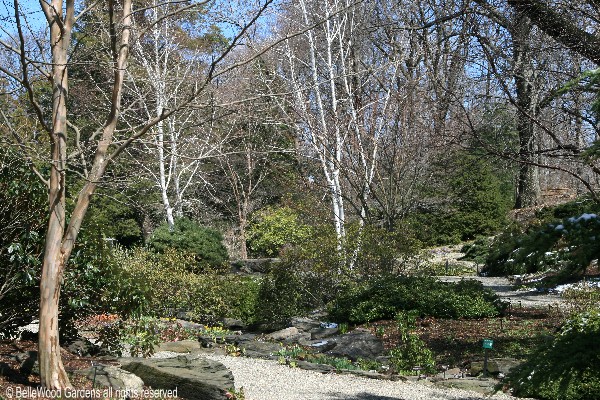
Thursday, 24 March 2011
On the Rocks at the New York Botanical Garden
At 250 acres New York Botanical Garden has room for 50 plant collections and specialty gardens: a pinetum, a rose garden, a rock garden . . . . Not a collection of rocks, but rather a place to grow those plants that naturally grow amidst them. The three acre rock garden is named in honor of Thomas H. Everett, former director of horticulture at the New York Botanical Garden, who died in 1986. Completed in 1934, the T. H. Everett Memorial Rock Garden was designed with a variety of micro-habitats to display plants from the rocky and mountainous regions of the world. Nooks and crannies provide shelter for little plants from the high mountains, stream and waterfall offer moist sites, and the huge boulders set in place by muscle power of men and a team of horses are as impressive today as when first put in place over 70 years ago.

.
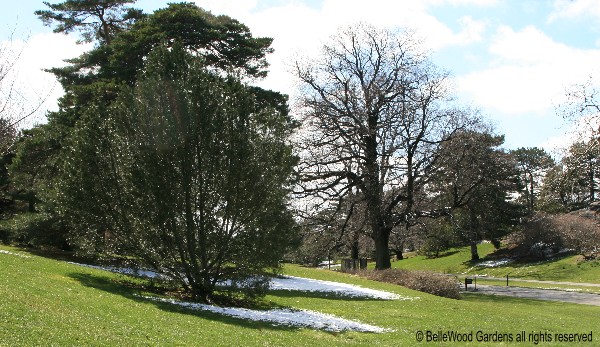
By the time we reached the rock garden it was early afternoon and much of the morning's snow
had vanished in the sunshine, save where it hid in the shade of evergreen trees. But it did look as though
the large rocky slope on the approach to the rock garden still had a skirting of snow. As we got closer
we saw it was masses, hundreds of Scilla mischtschenkoana, its pale flowers the color of skim milk.
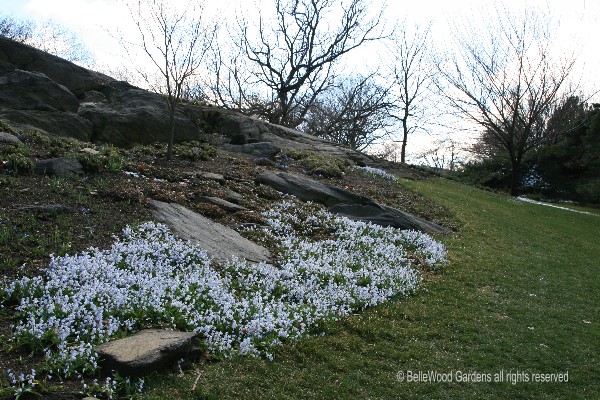
Talking to the rock garden's primary caretaker I learned that last fall they received a generous donation
of 150,000 bulbs from a major bulb vendor. These were leftovers, unsold bulbs at the end of the season.
By the time they got the last ones planted it was a matter of hammering into frozen soil to make the planting
holes, doubtful that anything would come of the effort. But then the snow arrived, wrapping the garden in a
blanket of white pretty much all winter long. And that's what they wanted, now blooming in profusion.
.
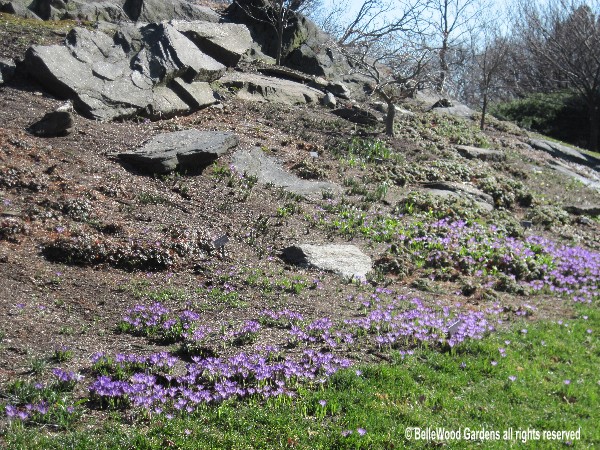
It had a different aspect just one week ago. After teaching my class on perennial plant combinations
I walked over to the rock garden for a brief visit before the drive home. On March 17th the outcrop
presented a marvellous display of Crocus tommasinianus glowing in the afternoon sunlight. I admired
the skillful planting, with groupings and gaps and even a few bulbs in the grass replicating natural increase.
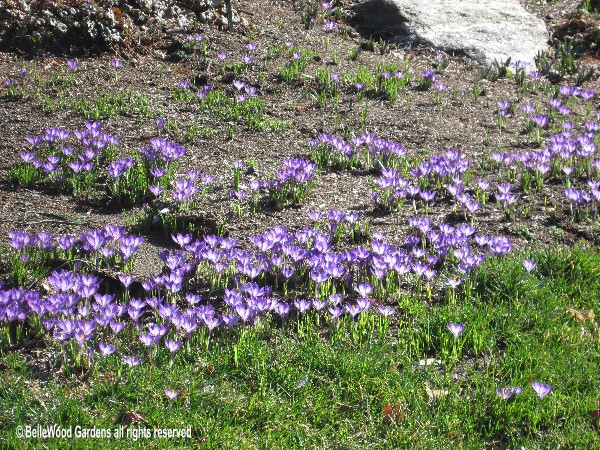
.
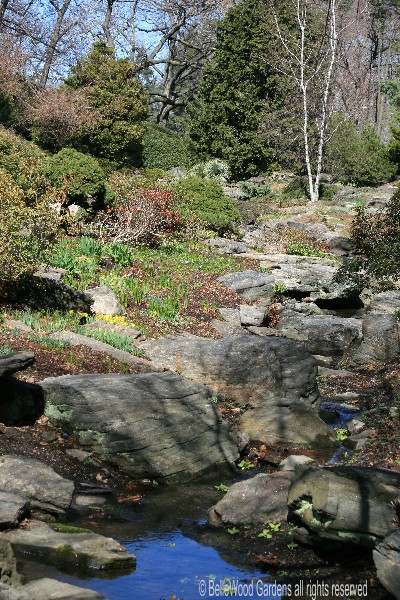
The rock garden has an oval path with perimeter plantings and
a large central portion that features an alpine lawn area. Here
is a view of that part of the garden looking toward a stony outcrop
with a sprawling Japanese black pine disguising most of the rocks.
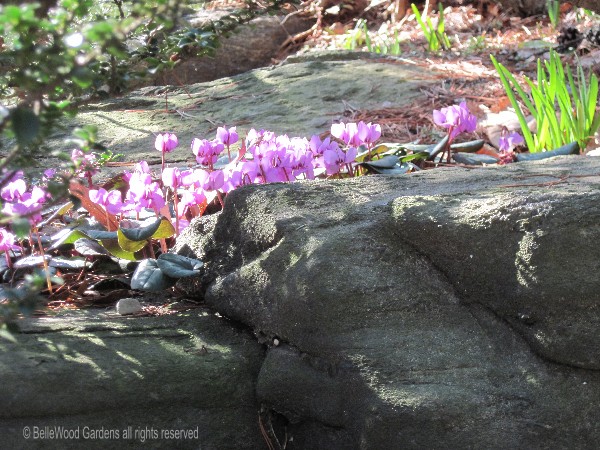
And happily growing in crevices among the rocks and under the conifer are numerous Cyclamen coum,
their vivid pink flowers like miniature butterflies dancing. For years and years they've been allowed to just
drop their seeds (with a gravity assist) and let them tumble where they may, to grow and flower.
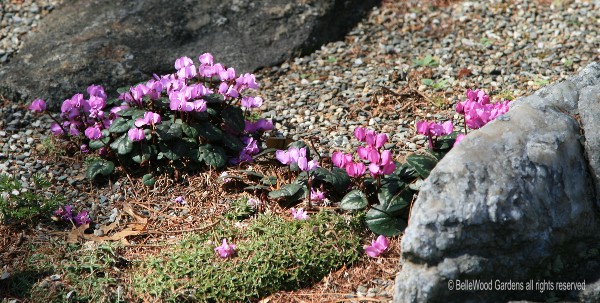
There are more Cyclamen coum elsewhere in this garden, but they are also tucked among the rocks.
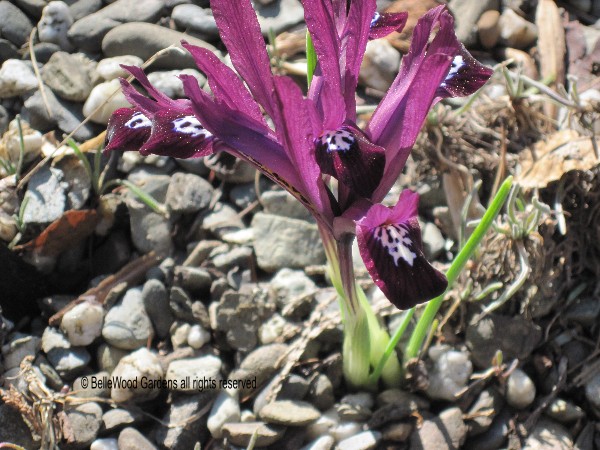
Appearing too frail to have ever worked its way up from under the gravel mulch a violet and dark purple
flower of Iris reticulata 'Pauline' sparkles in the March sunshine.
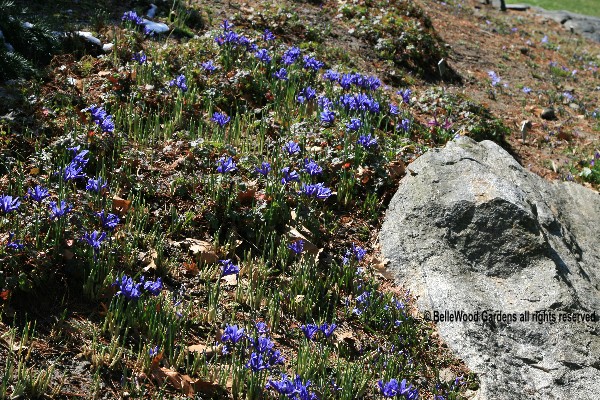
Iris 'Harmony' is cross between I. reticulata and I. histrioides, its royal blue falls accented with
a white rimmed yellow blotch that serves as a bee guide for early nectar seekers.
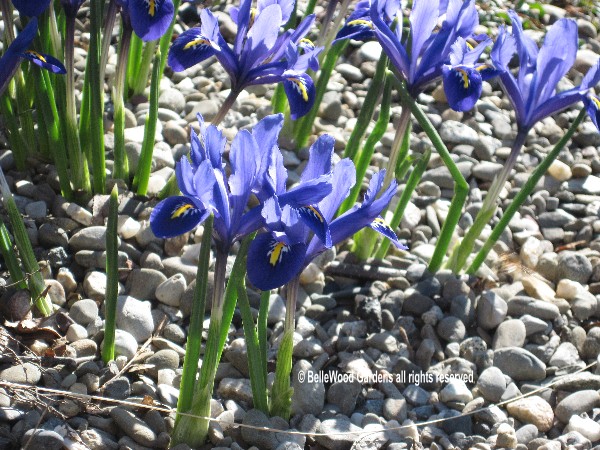
.
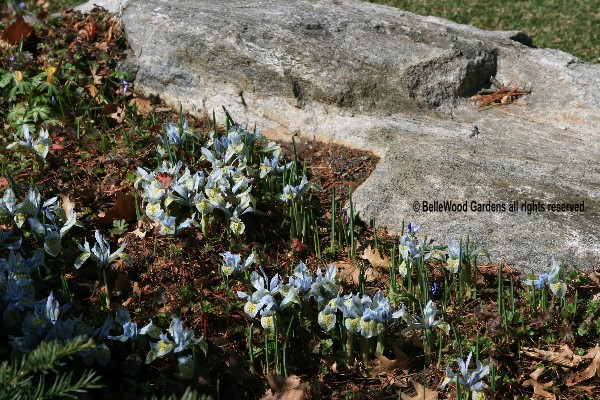
'Katharine Hodgkin' is another of the little early blooming bulbous iris, this time an unusual cross
of Iris histrioides var major and I. winogradowii with ethereal shades of sea mist powder blue
stippled and penciled in dark denim blue. A prize winning, coveted gem, and with good reason.
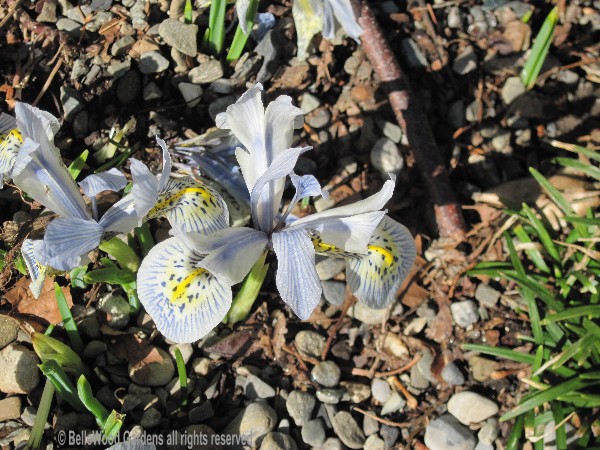
.
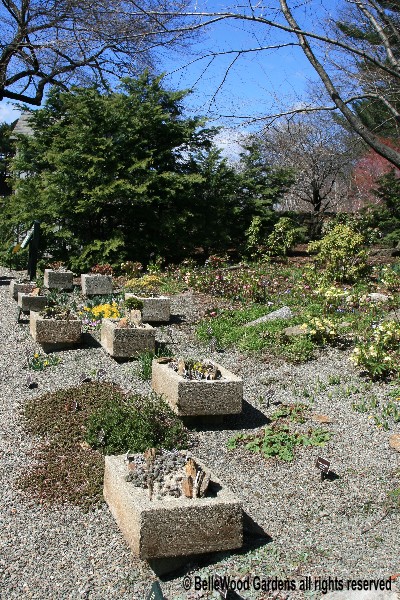
Right by the entrance to the rock garden is a nice collection of troughs,
hypertufa planters made of cement, perlite, and peat moss. Developed
specifically for alpine plants they have the charm of a miniature landscape.
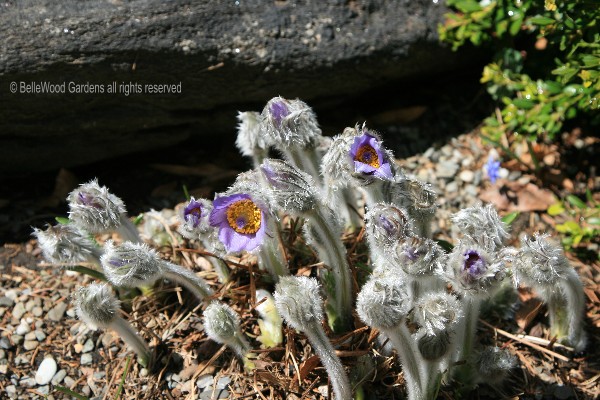
Looking as though they are wearing a furry coat for protection against the last snows of early Spring
the flowers of Pulsatilla halleri emerge thickly layered with silvery hair, their golden stamens glowing.
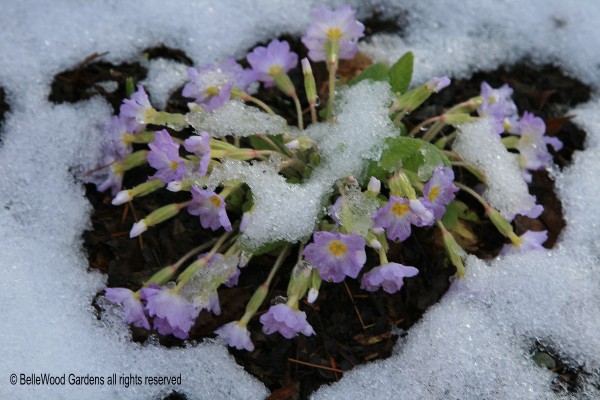
Sheltering under a hemlock and unfazed by a layer of icy snow dainty Primula woronovii finds a home
here in the rock garden. Rare, endangered and vulnerable in its native haunts of the Caucasus Mountains
one of the purposes of botanical gardens to preserve plants such as this, and display them for our enjoyment.